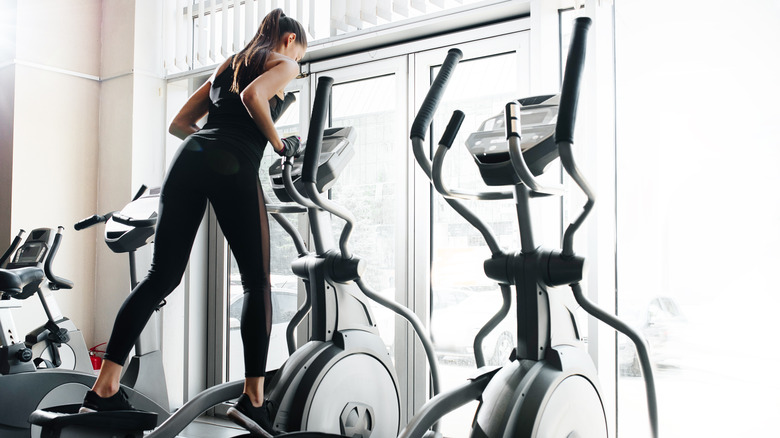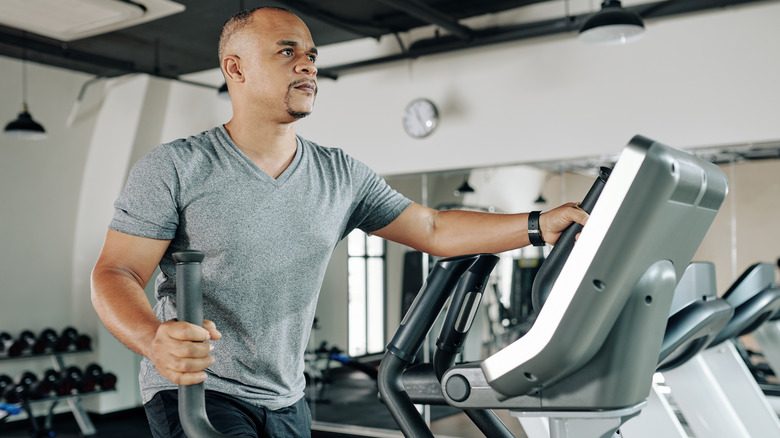The Elliptical Doesn't Burn As Many Calories As You Think
Elliptical machines have been popular gym machines since their invention in the 90s (via SteadyHealth). They were intended to be a cardio exercise machine that would be easier on the knees than running or jogging on a treadmill. As the Mayo Clinic explains, they achieve that goal. Compared to cardio exercises like running, whether outdoor or on treadmills, the elliptical is easier on ankles and knees, making it a low-impact exercise.
If you go by the display on most elliptical machines, it also burns a ton of calories. However, those handy digital readouts may not be as trustworthy as they seem, according to an experiment conducted by the University of California San Francisco (UCSF) at the request of Good Morning America (via U.S. News and World Report). UCSF found that elliptical readouts overestimated calorie consumption by almost 42%.
Mike Donavanic, a personal trainer and certified strength and conditioning specialist, explained to U.S. News and World Report that the inflated calorie count can be blamed on the machine not accounting for how users build up momentum. Their body weight pushes the platforms down when they reach the top of their cycle, which requires little calorie burn and builds up speed on the machine. Over time, this momentum increases, and the elliptical machine starts to overestimate the calorie expenditure. Here is a little more insight into the actual number of calories burned.
Calorie burn relates to body weight
According to Healthline, the number of calories a person actually burns on an elliptical machine has a lot to do with their weight. The more a person weighs, the more calories they burn. A person who weighs 125 pounds will burn around 270 calories after half an hour of general or moderate elliptical work. A 185-pound person, by contrast, will burn closer to 400 calories in the same span of time.
Other factors that can affect calorie burn — and increase the number of calories used, regardless of what is on the digital readout — include incline and the other exercises done during the workout. Self notes that taking a break every 3 minutes to perform a plank or side planks can add a core workout to the cardio routine offered by the elliptical. Doing curls on your 3-minute breaks can turn the workout into something closer to HIIT than pure cardio. If you'd prefer to stay on the machine, you can increase the incline or go backward, rather than pushing your feet forward. All of the options change up the workout and increase the number of calories burned, providing results closer to what most people expect.


